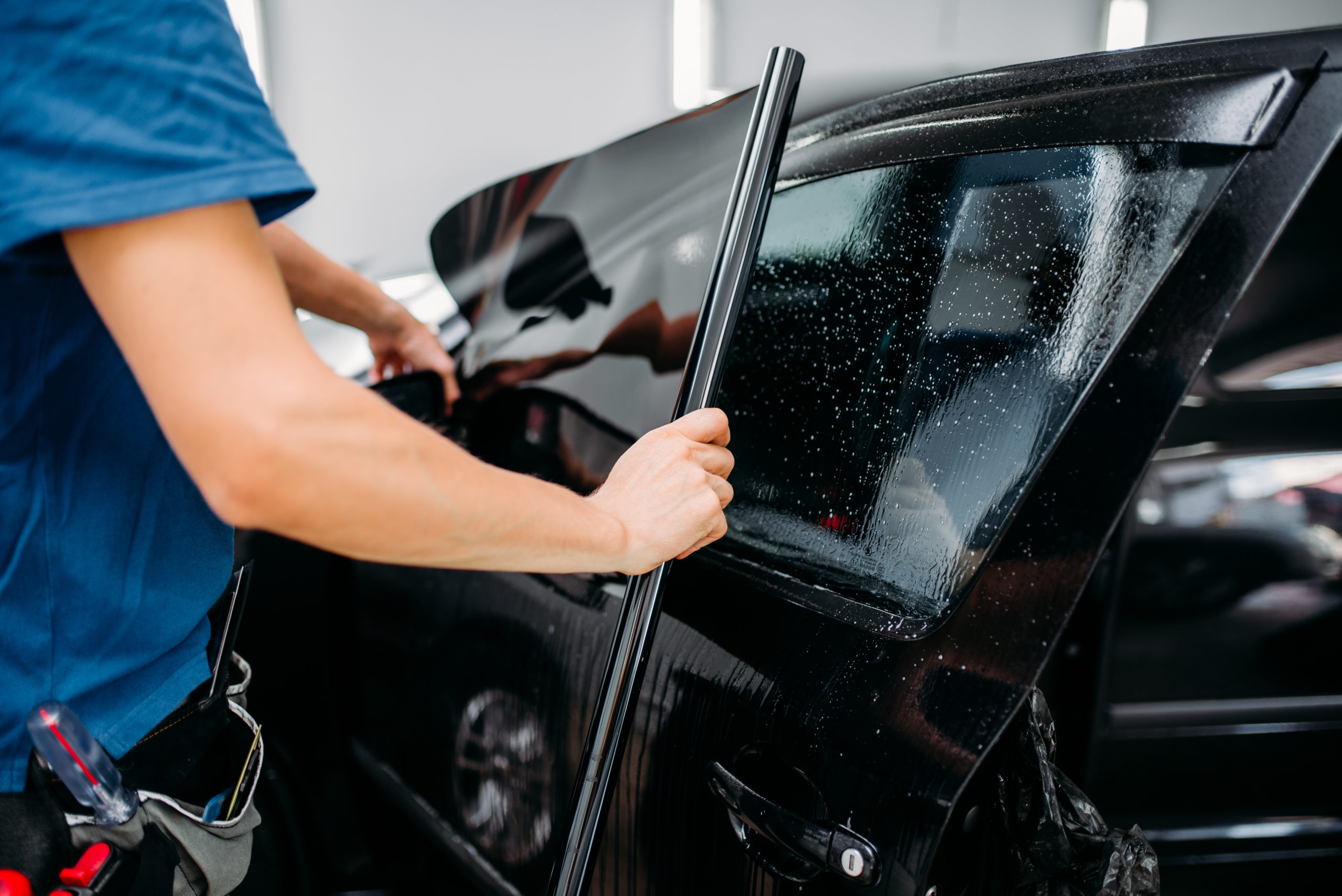The Long-Term Conveniences of Window Tinting for Your Car's Worth and Comfort
The Long-Term Conveniences of Window Tinting for Your Car's Worth and Comfort
Blog Article
The Process of Specialist Home Window Tinting Explained
From choosing the right movie kind to the meticulous preparation of windows, each step plays a crucial function in accomplishing a perfect application. Following these initial prep work, the mindful cutting and application of the film need precision to stay clear of flaws.
Selecting the Right Home Window Movie
The first factor to consider is the type of movie, which can range from colored, metalized, to ceramic movies (window tinting). Colored movies mainly offer privacy and aesthetic enhancement, while metalized films show warmth and UV rays, improving power efficiency.
Following, take into consideration the film's Visible Light Transmission (VLT) percentage, which identifies exactly how much light enters the area. A reduced VLT provides greater privacy and warmth being rejected however may reduce natural light substantially. Furthermore, the movie's solar warm gain coefficient (SHGC) is vital; a lower SHGC suggests better thermal performance, helping to keep indoor comfort.

Preparing the Windows
Once the suitable window film has actually been selected, the following step is extensively preparing the windows for setup. This prep work is important for achieving optimal attachment and making certain a remarkable appearance post-installation.
The initial job involves cleaning up the windows carefully (window tinting). A high-quality glass cleaner is vital, ideally one that is ammonia-free to prevent destructive any type of home window seals or tint materials. Making use of a lint-free towel or paper towels, specialists should get rid of any dirt, dirt, or oil, paying special interest to the sides and corners where debris usually gathers

Cutting the Movie
A precise strategy to cutting the movie is necessary for guaranteeing a perfect fit on the prepared home windows. This step calls for both skill and attention to detail, as errors can result in undesirable spaces or overlaps that concession the aesthetic and useful high qualities of the color.
Before reducing, the professional must measure the window dimensions accurately, representing any kind of distinct forms or shapes. It is advisable to use high-grade window movie, as this product tends to be a lot more flexible throughout the reducing process. The film is normally laid level on a tidy, smooth surface, and a sharp utility knife is employed to make sure tidy sides.
To achieve optimal results, lots of specialists use templates created from previous installations or utilize software program to design click here now accurate patterns. A typical method entails adding an added margin to the template, permitting modifications throughout the application stage.
Moreover, reducing the film in a regulated setting decreases the risk of pollutants impacting the sticky side. By adhering to these thorough methods, home window tinting experts can make certain that the movie not just fits flawlessly yet additionally executes properly gradually, boosting both look and performance.
Applying the Tint
After carefully cutting the movie to the proper measurements, the next step involves using the color to the home window surface. This process begins with making sure that the home window is clean and devoid of any dirt, particles, or deposits that might impact adhesion. A customized Full Report cleansing service is typically used, followed by comprehensive drying with a lint-free cloth.
As soon as the surface area is prepared, the installer will very carefully position the color movie versus the glass. It is imperative to straighten the movie properly to prevent misplacement, as any type of mistakes can lead to a less than professional look. To promote this, the installer may make use of a light haze of application option on the adhesive side of the movie, permitting small rearranging if needed.
Utilizing a squeegee, the installer will after that start to press the film onto the glass, functioning from the center in an outward direction to remove air bubbles and make certain a firm bond. This method is important, as it assures a smooth and perfect surface. Throughout the application, attention to information is important to stop folds or imperfections, ensuring that the color not only improves appearances however also provides the wanted capability.
Final Examination and Care
The last evaluation is an essential action in the home window tinting process, making sure that the installation fulfills both visual and functional criteria. During this phase, professionals diligently examine the mounted tint for any type of imperfections, such as bubbles, folds, or imbalances. A complete examination likewise consists of checking the adherence of the film to the glass, as well as its uniformity and general appearance.
After the examination, correct care and maintenance instructions are given to the customer. It is necessary to inform them regarding the recommended timeline for cleaning the tinted home windows, usually advising a delay of a minimum of 30 days after installation to permit the adhesive to treat completely. Clients must be informed on suitable cleaning items and methods, stressing the evasion of ammonia-based cleansers that can damage the color.
Additionally, specialists must advise customers on the importance of regular upkeep to prolong the life of the color. This includes routine checks for indicators of wear or damages and responding promptly to any kind of problems. By making certain an extensive final assessment and giving clear care standards, home window tinting specialists boost client satisfaction and the longevity of their work.
Verdict
The expert window tinting procedure includes several critical steps that ensure top quality results. Choosing the appropriate movie type, preparing the home windows meticulously, precisely reducing the movie, and using it with accuracy her explanation are essential for attaining a perfect coating.
Report this page